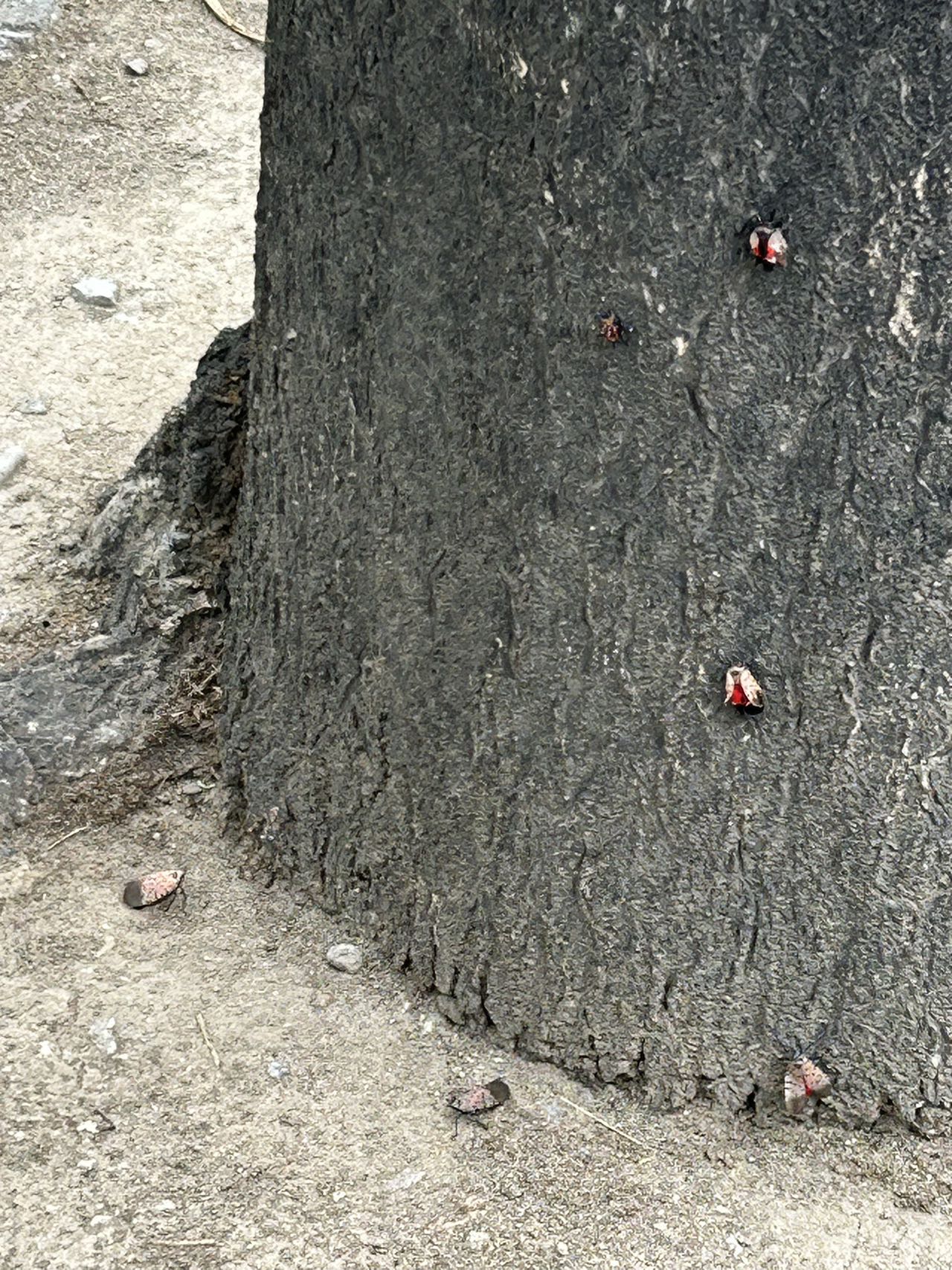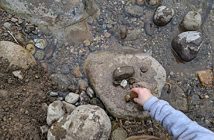Recently, there has been a huge increase in these mysterious red-and-black patterned bugs all around Beijing, and even beyond that. They’re everywhere: falling from trees, on top of cars, and even scattered around walkways to accompany your nice walk with the crunching of bugs beneath your feet. The U.S. has recently issued a warning to “kill them on sight”, which suggests that they might be dangerous, but no one has warned the Beijingers about these bugs. This has brought various questions to light: what are these bugs? Why are they everywhere? And ultimately, are they dangerous?
To answer the many questions we have, we’ve consulted Professor Jacob Wickham, who has done numerous studies on these bugs.

- What are these bugs and where do they come from?
The spotted lanternfly (Lycorma delicatula, SLF, or 斑衣蜡蝉 in Chinese), is native to China. The insect prefers Ailanthus (“stink tree” or 臭椿 in Chinese). The tiny nymphs are black with white spots (hence the name 斑衣蜡蝉)but the larger nymphs and adults are bright red! Bright colors in nature are usually warnings that they’re toxic, preventing other animals from eating them.

Because of their feeding habits, both the nymphs and adults feed on the sap of this tree, and exude a sugary substance like “honeydew”. This honeydew can fall down onto the ground, which is where you see windshields and windows of cars parked under these trees coated in dried sugar.
- When do they show up the most?
The first baby nymphs are usually seen in early to mid-April and the red nymphs and adults appear in June, with adults mostly seen in July. I’ve seen them flying as late as November.

- Why have they been showing up so much, especially around Beijing in recent years?
I think the widespread planting of Ailanthus (臭椿) as a city tree has worsened the problem, but originally, the insect is one of the few insects that have been successful in colonizing cities. It has spread in Korea and the eastern US as well, where it has become an invasive species. Because of its toxicity, it also has very few natural enemies.
- Are they harmful to the environment? Do they inflict any damage?
I’ve seen some trees killed by having too many spotted lanternflies feeding on them, and sometimes a black sooty mold fungus grows on the honeydew. They have a broad host range, feeding on some important plants like apples and grapes, so there is some concern about them, but they’re mostly required to feed on Ailanthus at some point in their life cycle.
Science is still working out the science behind these mystery insects. Maybe they pick up their toxic chemicals from that tree?
- Are they harmful to my kids or family? What about my pets?
For both kids and pets: they don’t bite, so please don’t hurt them!
I’ve seen ants walk past their corpses, so that’s an indication that not many things will eat them. The adults are quite beautiful, and I’ve seen children catch them with no repercussions. So no, you can relax: they’re not harmful.

- What do I do if I come across or in contact with one? Is it safe to kill it?
I recommend staying calm and letting it jump off you. They’re pretty harmless.
I don’t see a point in killing them, but if the numbers are getting too much, you can contact the Beijing Forest Protection Station to trap nymphs and adults using sticky tree bands and chemical attractants.
Images: Suah R, Jacob W




